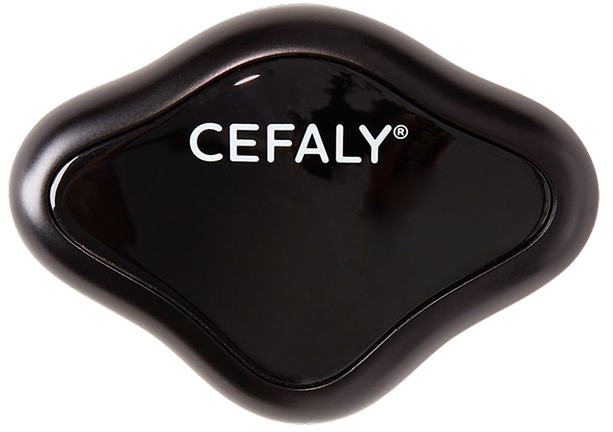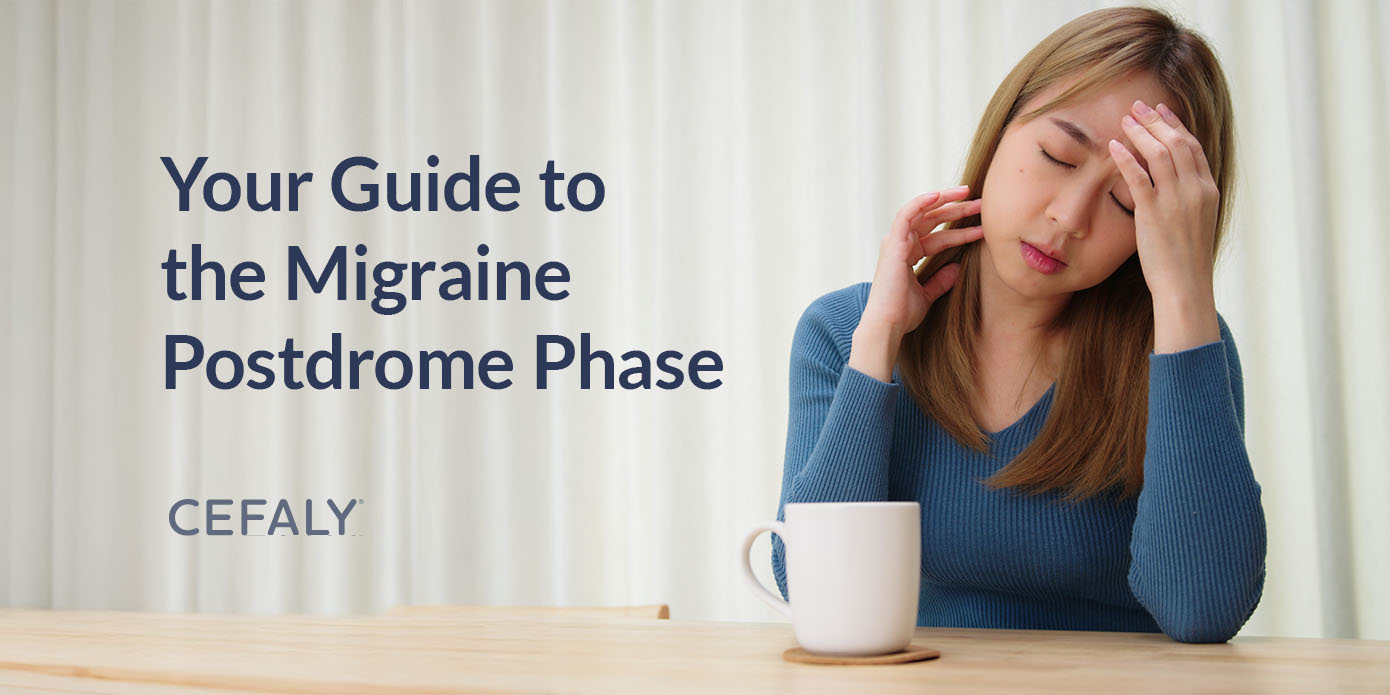If you have ever had a migraine attack, you might be familiar with that disorienting, draining feeling that lingers after the initial pain stops. These symptoms aren’t just a coincidence — they’re part of a lesser-known migraine phase called postdrome. Once you understand what to expect during this stage, you can take steps to create a more comfortable, restorative recovery plan.
What is the postdrome migraine phase?
A migraine attack has four stages. The last of these is called the postdrome phase, which takes place after the primary attack of painful symptoms has finished. Approximately 80% of people with migraine experience postdrome symptoms.
Many people have dubbed this phase a “migraine hangover,” and it can be just as disruptive as the migraine attack itself. Each postdrome occurrence may be different, and there’s no way to predict how or if symptoms will manifest. You might feel its effects for anywhere from several hours to a couple of days.
Experts aren’t sure exactly how or why postdrome takes place, but it’s thought that it could be a result of exhausted neural circuits in the brain. When you consider all your body has experienced during the first three stages of migraine, it makes sense that it could take a little time to feel like yourself again. Managing pain and other symptoms expends a lot of energy.
Common symptoms of the migraine postdrome stage
Though the worst of the pain has passed by this stage, the postdrome migraine phase comes with its own set of symptoms to manage. These may include:
- Pain or discomfort: You might feel lingering head pain as your more intense migraine symptoms leave. Post-migraine effects could also include body aches and stiffness, dizziness, and nausea or digestive issues.
- Mood changes: Many people who experience the postdrome phase of migraine report unexplained changes in mood that can fluctuate from feelings of sadness or depression to elation.
- Cognitive difficulties: Feeling “out of it” or dazed is a hallmark symptom of postdrome. Some also experience general confusion or trouble concentrating.
- Sensitivity to your environment: If you live with migraine, you’re likely familiar with its accompanying sensitivity to light, sound or touch. For some, this sensitivity can last through each stage of the migraine, including postdrome.
- Increased tiredness: Migraine attacks can take a lot out of you. It’s common to experience excessive tiredness or fatigue as your body works to recover.
How to recognize your personal postdrome symptoms
Post-migraine effects aren’t the same for every person. Not everyone’s attack includes a symptomatic postdrome phase — and just because you’ve experienced one before doesn’t mean you necessarily will each time. You could have entirely different symptoms during your next postdrome occurrence. It can also be tricky to know precisely when your migraine is shifting out of the main migraine stage and into the final one.

The best thing you can do is start tracking your migraine each time to see if any patterns emerge. If you use a CEFALY device to help manage or prevent migraine symptoms, you can note your attacks in the CeCe Migraine Management App. You could also use a physical journal. Whichever method you prefer, record the following information for every migraine:
- The time, date, location and duration of your attack, including roughly how long each phase lasted
- Possible triggers, such as certain weather conditions, activities and foods
- Helpful context, such as what activity you were doing when you noticed your first symptoms or any life events that happened around the same time
- What stage of the menstrual cycle you’re in, if applicable
- Specific symptoms that you experienced
- Which treatment methods you used, including medications, your CEFALY device’s ACUTE treatment mode or holistic remedies for individual symptoms
Get Drug-Free Migraine Relief With CEFALY
Shop Now
90-day money back guarantee
FDA-cleared
financing available
How can I prevent the postdrome phase after a migraine?
We don’t yet know a way to prevent individual migraine stages from occurring. Instead, focus on creating more migraine-healthy habits and taking steps to avoid known triggers. It’s important to stay hydrated throughout your entire migraine attack. Try to avoid or reduce unnecessary stress, and stick to meals with ingredients that help you feel your best.
Many people also find success using CEFALY’s PREVENT setting every day to reduce the chance of experiencing an attack. Sessions are just 20 minutes long, and you should start seeing the benefits in two to three months of regular use.
Strategies for managing post-migraine symptoms
Postdrome may be the last stage of a migraine, but that doesn’t mean it’s any less uncomfortable or disruptive. It’s important to respond with the same care and patience as you do during the primary stage of the attack. Instead of trying to immediately resume normal activities, allow yourself time to rest and recover from what your body has just experienced.
These strategies may help alleviate post-migraine symptoms:
- Relaxing in a quiet, dark room without using any screens
- Eating a small meal, even if you’ve lost your appetite
- Drinking water or electrolyte-infused beverages
- Taking over-the-counter medication for nausea
- Avoiding over-the-counter pain medication to reduce the chance of rebound headaches
- Doing light stretches to combat stiffness
- Taking the day off from work, school or other responsibilities that require focus
- Using an ice pack or heating pad
- Avoiding strenuous activity
- Wearing sunglasses to minimize harsh lighting
- Avoiding known migraine triggers that may worsen symptoms
- Maintaining a consistent sleep schedule and prioritizing restful sleep
Remember to log your postdrome experience in your migraine journal or the CeCe app. Note which strategies brought relief, whether anything made it more difficult to recover, and how long the symptoms lasted before you felt back to normal.
See fewer migraine days with CEFALY
After you’ve dealt with the pain of a migraine attack, managing postdrome symptoms can feel like an uphill climb. Fortunately, you don’t have to make that journey alone. You could experience fewer migraine days with consistent use of CEFALY’s PREVENT treatment program, while the 60-minute ACUTE mode can help alleviate pain during active attacks.
CEFALY is a noninvasive device that you wear on your forehead. It uses external trigeminal nerve stimulation (eTNS) technology to send small electrical impulses through an adhesive electrode to the trigeminal nerve, which is the brain’s primary pathway for migraine pain. As an FDA-cleared, drug-free treatment method, it has fewer side effects than medication and can be used on its own or alongside other migraine treatments.
Learn more about how CEFALY works or review our clinical studies to explore the life-changing results other people have experienced. Don’t let migraine keep you from living the life you want — find your CEFALY device today.















